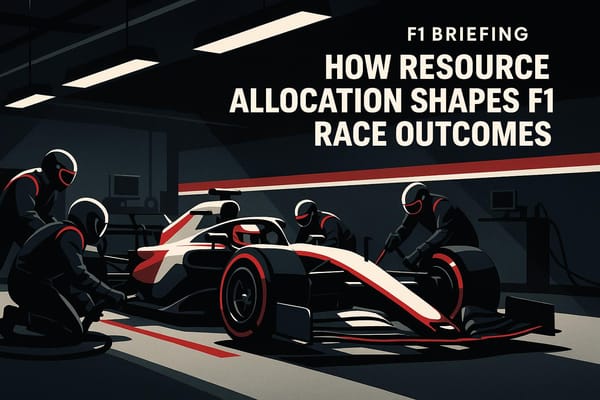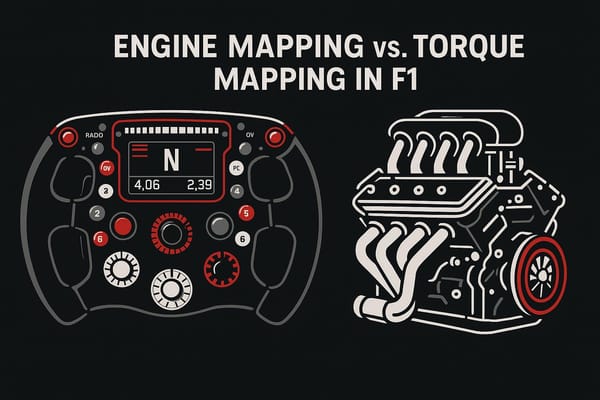Inside the 2025 Australian Grand Prix: Can Melbourne Set the Pace for the Season?
The 2025 Australian Grand Prix showcased thrilling strategies, technical advancements, and standout performances, setting a competitive tone for the season.
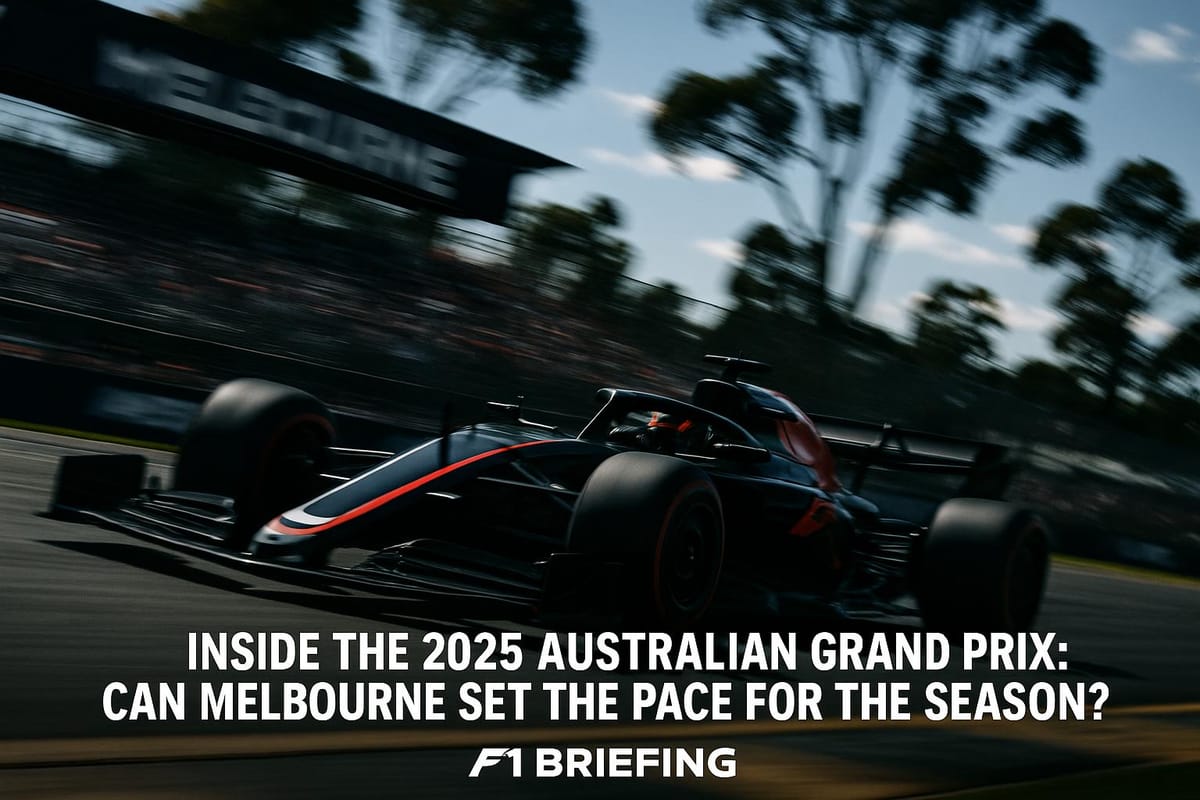
The 2025 Australian Grand Prix delivered a thrilling season opener, with Lando Norris claiming his first win at Albert Park and leading the Drivers' Championship for the first time. McLaren's strategic precision and technical upgrades stood out, while Red Bull and Mercedes showcased competitive performances under challenging weather conditions. Rookie Andrea Kimi Antonelli impressed with a P4 finish, while Ferrari struggled with poor strategy calls and technical execution. Here's a quick breakdown:
- Winner: Lando Norris (McLaren)
- Key Performances: Norris' victory, Antonelli's P4 debut, Russell's podium for Mercedes
- Team Highlights: McLaren dominated with smart strategy and car upgrades; Williams excelled with Alex Albon finishing P5
- Challenges: Ferrari's missteps in strategy and upgrades; high-profile retirements from Sainz and Alonso
With 23 races ahead, Melbourne has set a competitive tone for the 2025 Formula 1 season.
Why the AUSTRALIAN GP was so CHAOTIC
1. Race Strategies
The 2025 Australian Grand Prix offered a fascinating glimpse into how teams approached the unpredictable conditions, showcasing their ability to make critical decisions under pressure. The shifting weather at Albert Park created a perfect storm - literally and figuratively - for testing strategies, separating those who thrived from those who faltered.
Effectiveness at Albert Park
McLaren proved their strategic prowess during the late rain. Lando Norris's race was a masterclass in timing and decision-making. Despite losing time initially, a perfectly timed switch to intermediate tires allowed him to recover and take the win. On the flip side, Oscar Piastri’s race ended in disappointment, with his car stranded in the grass during the same tricky conditions. This stark contrast within the team underscored how razor-thin the line between success and failure can be.
"It's an incredible start to the year and the team have given me an amazing car from the get-go." - Lando Norris, McLaren
Red Bull took a bold gamble by keeping Max Verstappen on slick tires as the rain began, briefly giving him the lead. However, tire wear forced a change in strategy, costing them the top spot. It was a calculated risk that didn’t fully pay off but highlighted their willingness to push boundaries.
"It was a good result for us and an enjoyable but hectic race... It was hard for us to pass the McLarens, and we were struggling with the tyres overheating and tyre degradation." - Max Verstappen, Red Bull
Mercedes demonstrated their knack for making the right calls at critical moments. George Russell’s podium finish and Kimi Antonelli’s impressive climb from P16 to P4 were both products of sharp strategic thinking during the chaotic conditions.
"That was not an easy race for anyone, so I'm pleased to bring it home in P3, taking our first podium finish of the new season." - George Russell, Mercedes
Team Adaptability
The race highlighted a clear divide in how teams adapted to the ever-changing conditions. Williams executed a perfectly timed pit stop that propelled Alex Albon to an impressive fifth-place finish. For a team often battling in the midfield, this result could be a crucial boost to their season.
"I'm really happy. It was such a crazy race, I'm still trying to get my head around it! It's fantastic for the team - a P5 is very special and may not come around many times this year. Our strategist did an amazing job." - Alex Albon, Williams
Ferrari, on the other hand, struggled with timing. A delayed decision to switch to intermediates cost them dearly, with both drivers slipping to the lower end of the top 10. Charles Leclerc’s spin added to their woes, illustrating how one poor call can snowball into a series of setbacks.
"We can't be happy with today's result as it doesn't match the potential of our car and that means, as a team, we didn't do a good job... we got our next strategy move wrong by staying out one lap too long and we paid the price." - Fred Vasseur, Ferrari
Racing Bulls also suffered from indecision. Yuki Tsunoda’s 12th-place finish was a direct result of a late pit stop for intermediates, showing how hesitation can be more damaging than taking a bold risk.
"The timing of the pit didn't go our way today, it was too late and suddenly I dropped to P11 after the Safety Car." - Yuki Tsunoda, Racing Bulls
These moments of triumph and miscalculation at Albert Park not only shaped the race but also provided a preview of how teams might tackle strategic challenges in the races ahead.
Impact on Season Trajectory
The strategies on display in Melbourne suggest McLaren is emerging as a serious contender. Their ability to stay composed under pressure and make decisive calls signals a team ready to challenge for the championship.
Red Bull, while showing improvement - "18 more points than we did last time we were in Melbourne" - still faces questions about tire management. If these issues persist, they could struggle on circuits with similar characteristics.
Mercedes, with their consistent strategic execution, looks poised to remain a podium regular. Their ability to capitalize on opportunities, even from less-than-ideal starting positions, could be a key factor as the season unfolds.
In contrast, the midfield teams, like Williams, demonstrated that precise timing and sharp decision-making can level the playing field. While the top teams can afford to take risks, smaller teams are finding ways to maximize their chances, proving that in 2025, strategic sharpness might be the ultimate equalizer. With a long season ahead, future races will continue to test and refine these approaches.
2. Technical Developments
The 2025 Australian Grand Prix was a showcase of innovation, with all 10 Formula 1 teams rolling out major updates to their cars. These weren't just minor adjustments; they represented months of intense development during the offseason, laying the groundwork for each team's performance throughout the year.
Effectiveness at Albert Park
McLaren made waves with aerodynamic upgrades, including a revised front brake duct and two new beam wing designs. These changes paid off spectacularly, securing a front-row lockout. Lando Norris clocked a lap nearly 0.4 seconds quicker than Max Verstappen, thanks to the car's impressive tire dynamics.
"They have a car which interacts exceptionally well with its rubber, on which the drivers can lean and exploit their ride's inherent pace. Russell suggested they were already uncatchable. He may well be right." - Giles Richards
Williams delivered a standout performance with a revamped front wing, wider sidepods, and a reprofiled undercut. These upgrades transformed their car, allowing Alex Albon to finish fifth and secure 10 points - an achievement that already surpassed the team's total points from 2024.
"We were aiming for top ten, so P6 is fantastic and I'm very happy. We have a great car, easy to drive, predictable; it feels like a much more driveable car this year." - Alex Albon
Red Bull introduced upgrades across 15 components, including the front wing, nose, suspension systems, floor, sidepods, and rear wing. Despite this extensive effort, their performance trailed McLaren’s efficiency, highlighting areas that still need fine-tuning.
"Well, we are back and it was a very encouraging performance from Max to have the provisional pole on the first run. But it always felt like McLaren had the better lap time." - Christian Horner, Team Principal, Red Bull
Ferrari brought updates such as a redesigned front suspension, compact sidepods, and a new rear wing. However, these changes failed to deliver the expected results at Albert Park, leaving the team with work to do.
Team Adaptability
The unpredictable weather in Melbourne tested how well teams could adapt their new upgrades. Alpine saw gains from their optimized floor design, sidepod inlets, and engine cover, which helped them perform well in changing conditions.
Sauber introduced a new front wing and reshaped sidepods, though production challenges were evident, as noted by Technical Director James Key. Meanwhile, Mercedes focused on airflow improvements with updates to the low rear track rod and floor tunnel profiles, which contributed to George Russell’s podium finish.
Aston Martin debuted upgrades to their nose, front wing, brake ducts, and sidepod inlet. Lance Stroll's sixth-place finish, earning eight points, reflected the effectiveness of these changes.
"Eight points for Lance is a great way to start our season. Conditions were challenging for everyone, but he delivered an excellent race to navigate his way to sixth place." - Andy Cowell, Aston Martin Team Principal
Impact on Season Trajectory
The technical developments on display in Melbourne are already shaping the 2025 championship narrative. McLaren's focused approach to winter development has yielded a car that excels in both qualifying and race conditions, setting them up as early favorites.
Williams has made a dramatic leap forward, transitioning from occasional point-scorers to serious contenders. Team Principal James Vowles summed up their progress:
"What an incredible feeling! We reflect on where we were twelve months ago and it's just a world of difference." - James Vowles, Williams Team Principal
The contrasting strategies among teams are already evident. Red Bull opted for widespread upgrades across multiple systems, while McLaren zeroed in on specific areas for maximum impact. Early results suggest that a targeted approach may hold the upper hand.
In the midfield, Racing Bulls impressed during practice with updates to their sidepod inlet, front wing, and suspension. Their progress positions them as strong contenders alongside Williams in what promises to be a tight battle.
Albert Park's semi-street layout and narrow run-off areas provided a tough proving ground for these innovations. Teams that successfully adapted their upgrades to these unique challenges demonstrated not just engineering skill but also the operational flexibility needed for the diverse circuits ahead.
These early technical insights will undoubtedly influence how teams refine their strategies for the coming races.
3. Driver Performances
The 2025 Australian Grand Prix showcased some incredible driving that could set the tone for the rest of the season. The unpredictable conditions at Albert Park truly tested the field, separating those with sharp instincts and adaptability from the rest.
Effectiveness at Albert Park
Lando Norris stole the spotlight with a commanding performance that solidified his place as a serious contender for the championship. The McLaren driver claimed his first win of the season, demonstrating both tactical brilliance and calm under pressure from Oscar Piastri and Max Verstappen.
"It's an incredible start to the year and the team have given me an amazing car from the get-go. Whilst it was a tough race due to the unpredictable conditions and the pressure from Oscar and Max, I felt comfortable and confident out there in the package the team have given us." - Lando Norris
Andrea Stella commended Norris for his ability to handle pressure, even with car damage in the final laps. Fans agreed, voting him Driver of the Day with 20.7% of the vote.
Andrea Kimi Antonelli made a splash in his debut, becoming the second-youngest driver in Formula One history to score points. Meanwhile, Alex Albon delivered a standout performance for Williams, signaling promising progress for the team.
These performances underlined how drivers adapted to the tough conditions, setting a strong precedent for the rest of the season.
Team Adaptability
Albert Park's unpredictable weather was a true test of adaptability for both drivers and teams. George Russell proved his wet-weather prowess, securing third place for Mercedes.
For Lewis Hamilton, his Ferrari debut was far from smooth. He struggled with the car’s handling and adapting to a new setup:
"It was very tricky, and went a lot worse than I thought that it would go – and the car was really, really hard to drive today... For me, I'm just grateful that I kept it out of the wall, because that's really where it wanted to go most of the time... But a lot to take from it, and also just getting acclimatised to the new power unit in the wet conditions, all of the settings that it requires, a different way of driving, a different setup on the steering wheel." - Lewis Hamilton
Oscar Piastri showed moments of brilliance, including a bold overtake on Hamilton, which earned him second place in the Driver of the Day voting with 17.2%. However, a late-race spin cost him a chance at a stronger finish.
The race also saw high-profile retirements from Carlos Sainz and Fernando Alonso, highlighting just how brutal the conditions were.
Impact on Season Trajectory
This race didn’t just showcase individual talent - it also shifted the dynamics of the championship. With his win, Norris now leads the drivers' standings with 25 points, while McLaren tops the constructors' leaderboard with 27 points.
| Position | Driver | Team | Points |
|---|---|---|---|
| 1 | Lando Norris | McLaren | 25 |
| 2 | Max Verstappen | Red Bull | 18 |
| 3 | George Russell | Mercedes | 15 |
| 4 | Andrea Kimi Antonelli | Mercedes | 12 |
| 5 | Alexander Albon | Williams | 10 |
McLaren’s performance was particularly noteworthy, with their car showing a 1.5-second edge over competitors in drying conditions on intermediate tires. This suggests they’ve unlocked something special in their setup. For others, like Charles Leclerc, the race was a wake-up call:
"It's been a tricky day, overall, but we'll look into it. It's only the first race of the season… Yes, it's not the first race we would have hoped for, but looking forward we need to re-motivate ourselves for Shanghai and recover from what was a disappointing first weekend." - Charles Leclerc
With only 14 drivers completing the race, Albert Park emphasized that consistency will be just as important as outright speed this season. Those who rose to the challenge here have positioned themselves as early favorites, while others need to regroup quickly to stay in the fight.
Strengths and Weaknesses
Breaking down the race's key elements reveals a mix of strong performances and notable challenges, reflecting earlier insights into strategy, technical execution, and driver performance.
| Area | Strengths | Weaknesses |
|---|---|---|
| Race Strategies | McLaren's flawless pit stop timing during safety car periods; Williams' calculated approach securing P5; Mercedes' well-executed strategy that earned Russell a podium | Ferrari's risky strategy backfired; High-torque hybrid engines proved difficult in wet conditions; Six retirements due to challenging weather |
| Technical Developments | McLaren's revised brake ducts delivered a 1.5-second edge in drying conditions; Red Bull's upgrade package showed strong results; Mercedes improved airflow management for better performance | Ferrari's new suspension failed to meet expectations; Some teams struggled with rapidly shifting weather; Technical updates from several teams fell short in improving race pace |
| Driver Performances | Norris showed championship-level composure; Antonelli impressed with a P4 debut from P16; Russell excelled in wet conditions, securing vital points | Multiple rookie crashes within five corners; Piastri's mistake cost him despite showing strong pace |
McLaren's Standout Performance
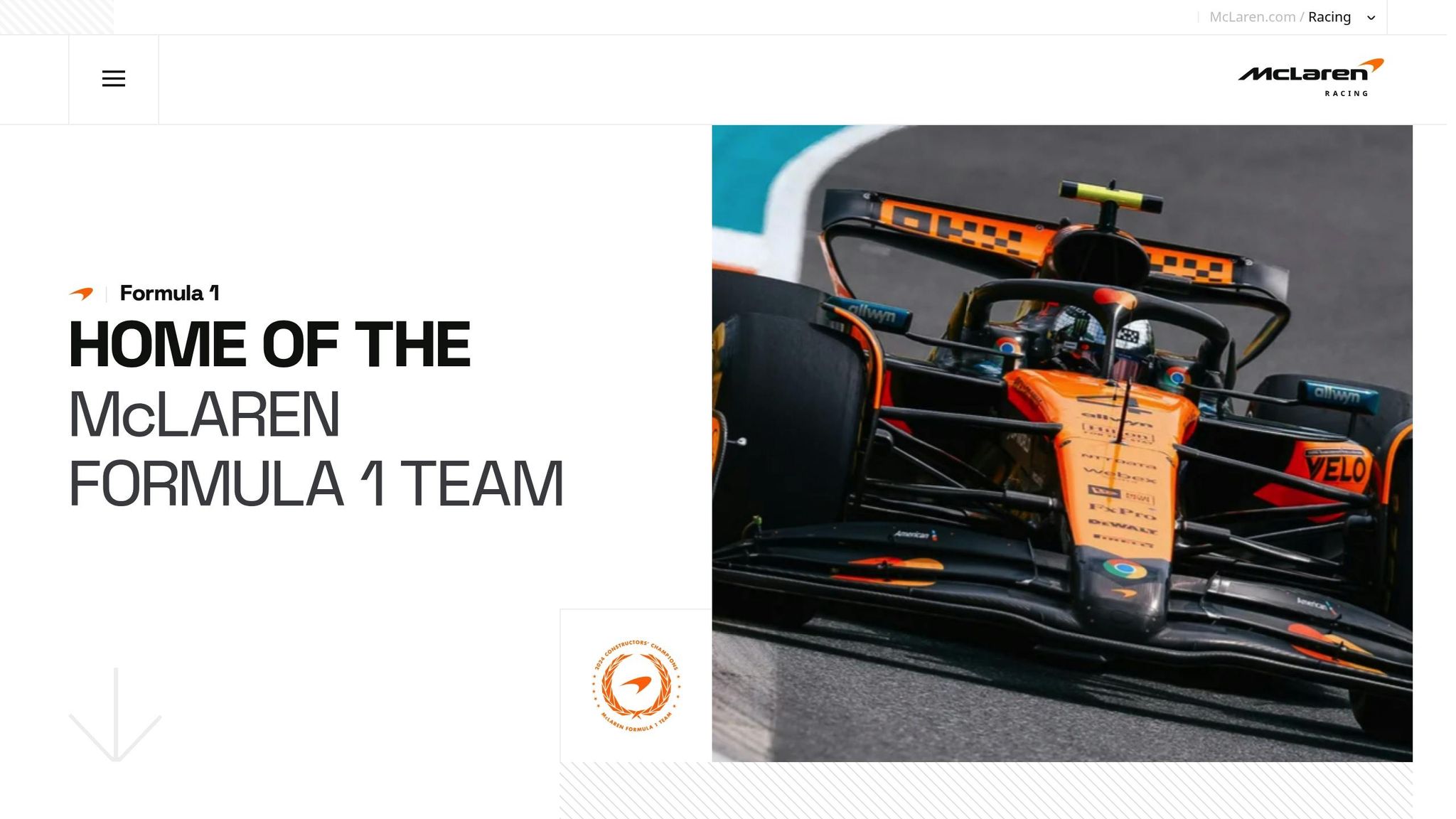
McLaren stood out across all categories, combining sharp strategy, technical upgrades, and exceptional driving. Their pit stop timing and technical adjustments allowed Norris to dominate from pole position, extending their lead by nearly 0.85 seconds per lap during critical stints. This cohesive effort was a clear display of their progress.
"We got it wrong a lot last year so I guess we learn from our mistakes." - Lando Norris
Ferrari's Struggles Continue
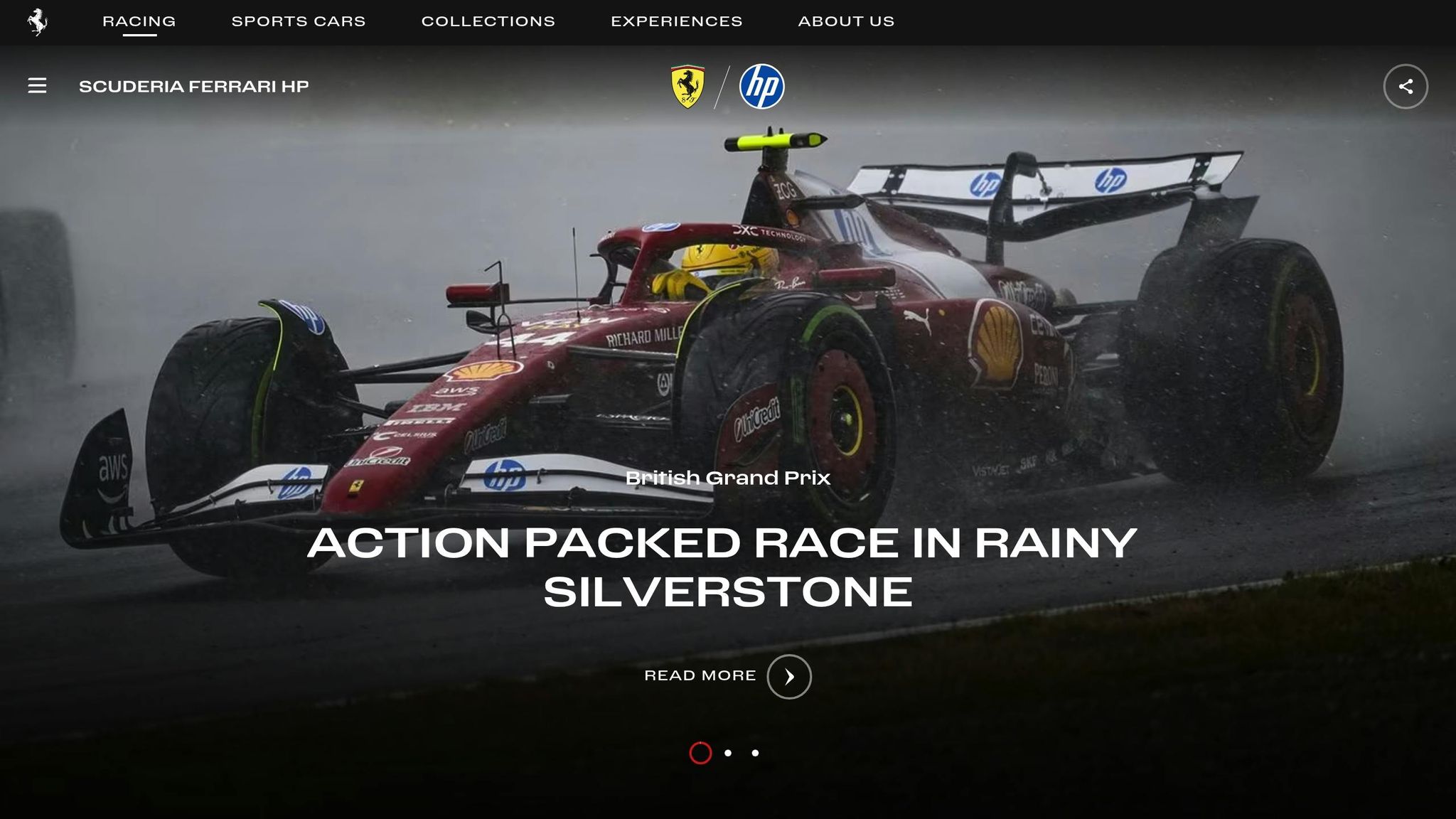
Ferrari's issues in both strategy and technical execution mirrored earlier struggles. Their gamble on strategy backfired, and their new front suspension failed to deliver the expected results, leaving them frustrated.
"We can't be happy with today's result as it doesn't match the potential of our car and that means, as a team, we didn't do a good job." - Fred Vasseur
Rookie Challenges and Individual Highlights
The race also exposed the steep learning curve for rookies in tough conditions. Several crashes within the first five corners underscored the difficulty of handling high-torque hybrid engines in the wet. However, Antonelli's debut performance stood out, climbing from P16 to P4, showing exceptional skill under pressure. On the flip side, Piastri's costly error highlighted how even strong pace can be undone by a single mistake.
Consistency vs. Speed
Williams provided a masterclass in the value of consistency over outright speed. Albon's patient approach and reliable technical package earned the team their best result since the 2021 Belgian Grand Prix. This performance reinforced the idea that a steady and reliable strategy can often outperform raw speed.
The Role of Hybrid Engines and Weather
The high-torque hybrid engines created additional challenges, particularly in wet conditions, making car control tricky and forcing teams to adapt their strategies on the fly. This dynamic influenced pit stop decisions and driver performances, showcasing how interconnected modern F1 racing truly is.
Looking Ahead
McLaren and Mercedes are emerging as early favorites, thanks to their ability to perform well across multiple areas. Meanwhile, Ferrari's struggles with strategy and some rookie driver errors highlight clear areas for improvement. As the season progresses, teams will need to address these weaknesses to remain competitive in the championship race.
Conclusion
The 2025 Australian Grand Prix provided an early snapshot of a season brimming with potential, showcasing the intense competition and tactical brilliance that will define this year’s championship. Teams like McLaren and Mercedes delivered standout performances, excelling in both strategy and technical execution, signaling they could be strong contenders as the season progresses.
Set against the backdrop of Melbourne's Albert Park, a semi-street circuit notorious for its unpredictability, the race challenged teams to adapt swiftly to changing conditions. The circuit’s high likelihood of Safety Car and Virtual Safety Car periods tested teams’ ability to make quick, decisive calls - an essential skill for championship success.
Albert Park’s unique demands added another layer of complexity. The track’s layout, with a substantial portion of the lap spent under full throttle, pushed power units to their limits while demanding aerodynamic precision. The circuit’s four DRS zones and the shortest pit lane on the 2025 calendar further emphasized the need for technical ingenuity and strategic foresight. Add to that Melbourne’s famously erratic weather - where sudden downpours are not uncommon - and it’s clear why adaptability remains a cornerstone for success here. Teams that excel in blending strategy, technical prowess, and driver performance at Albert Park are likely to carry these strengths throughout the season.
"It's not easy to overtake here, but a real pleasure to drive as you find your rhythm and wind your way around the picturesque Albert Park." – Jolyon Palmer, former Renault F1 driver
The Australian Grand Prix has set the tone for what promises to be a thrilling 2025 Formula 1 season. The lessons learned from Melbourne highlight the intricate balance of strategy, innovation, and performance that will define this year’s championship battle.
FAQs
What strategies helped McLaren excel in the unpredictable weather at the 2025 Australian Grand Prix?
McLaren's Triumph at the 2025 Australian Grand Prix
McLaren's victory at the 2025 Australian Grand Prix was a masterclass in responding to unpredictable weather. As rain swept through parts of the race, the team made split-second calls on tire changes and executed pit stops with flawless timing, keeping their drivers ahead of the pack.
What set McLaren apart was their sharp anticipation of weather changes and the ability to tweak their strategy in real-time. While other teams struggled to keep up with the shifting conditions, McLaren's drivers maintained impressive pace and control. It was this blend of tactical brilliance and seamless teamwork that secured their standout performance on race day.
What upgrades did McLaren and Williams introduce to excel at the 2025 Australian Grand Prix?
McLaren's impressive showing in Melbourne came down to two major upgrades: an aggressive flow-scavenging system that improved aerodynamic efficiency and a bio-based phase change material aimed at keeping tire temperatures in check. These enhancements played a crucial role in ensuring consistent grip and performance throughout the race.
On the other hand, Williams concentrated on refining their cornering abilities, especially in the slower parts of the track. They rolled out a pushrod rear suspension to enhance stability and a redesigned front wing that provided extra grip in low-speed corners. These changes helped them hold their ground in the season's opening race.
What mistakes did Ferrari make during the Australian Grand Prix, and how can they improve for future races?
Ferrari's Tire Strategy Missteps at the 2025 Australian Grand Prix
Ferrari ran into serious trouble during the 2025 Australian Grand Prix, largely due to their tire strategy. As rain unexpectedly hit the track, the team chose to stick with slick tires, a decision that backfired when the tires began to overheat and performance plummeted. To make matters worse, their switch to intermediate tires came too late, causing them to lose critical positions and valuable championship points.
Looking ahead, Ferrari must sharpen their approach to weather forecasting and decision-making during races. By improving their ability to anticipate sudden weather shifts and tailoring tire strategies to suit specific track and weather conditions, they can avoid similar setbacks in future races.

